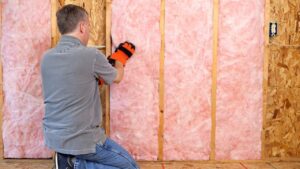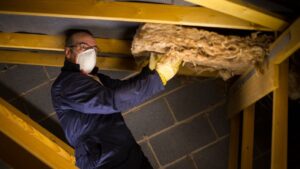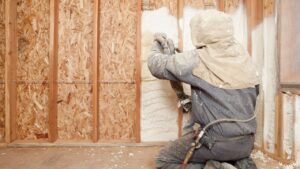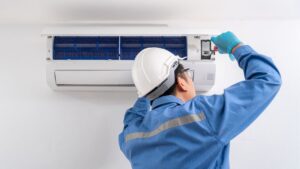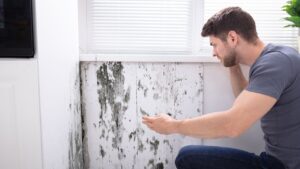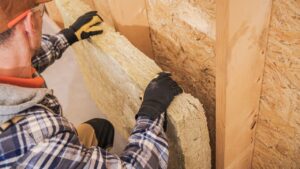Were you aware that about 25% of the air in your HVAC ductwork escapes due to leaky ducts and poorly fitted installation? This often leads to an unnecessary cost of hundreds of dollars for something that is so simple to have fixed. Fortunately, there are effective solutions available.
In many cases the answer is to either upgrade your ductwork or explore air duct replacement services. However, one solution often overlooked that is much cheaper is Air Duct Sealing. Taking action on the condition of your ducts is crucial before it becomes a costly issue.
Continue reading to discover how to identify ductwork problems and what steps to take in such situations.
Why HVAC Ductwork Is So Important?
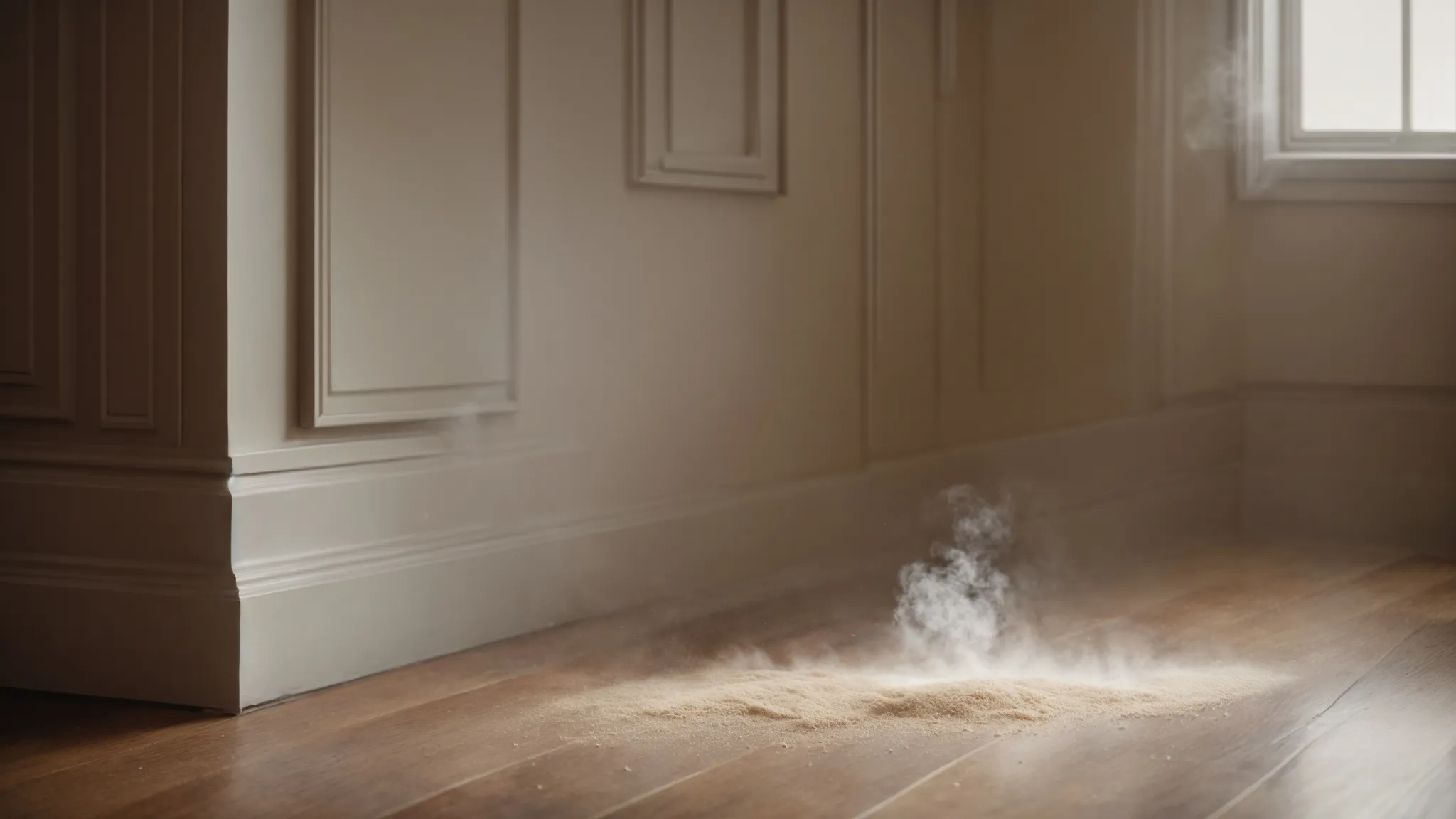
Poorly connected or damaged ductwork results in the air duct leaks, forcing your HVAC system to work harder than it should, and subsequently increasing your energy bill. The fiberglass and plastic in air ducts are designed to last around 10-15 years but are an often neglected part of the home.
Over time, wear and tear leads to worn air duct seals and leaky ducts. It’s crucial to address signs of damage promptly to avoid excessive energy waste and prevent more extensive repair projects. Damaged ducts can significantly impact your comfort, causing inefficiencies in your air conditioning unit and creating temperature inconsistencies and drafts.
Moreover, compromised ducts may introduce toxic air due to mold and mildew issues. Proper maintenance of your HVAC ducts is essential not only for energy efficiency but also for safeguarding your health and overall quality of life.
How to Tell When There is a Problem with Your Ductwork
Understanding the condition of your home’s ductwork is crucial for efficient heating and cooling. Discovering potential issues early can save on energy costs and ensure a comfortable and healthy living environment.
Here’s a quick guide on how to spot potential problems with your ductwork.
Noisy HVAC Operation
Your HVAC system is meant to produce some noise, but excessive rattling or vibrations in the ductwork can signal issues.
Check for damaged joints, as plastic or fiberglass connections may cause annoying sounds.
Loud noises during air circulation might indicate holes in the ducts—address them promptly to prevent worsening problems
High Energy Bills
When air escapes from your ducts, it’s considered normal to some extent. However, if more than 20% of the air is escaping, you’ll notice a direct impact on your energy bill. The explanation is straightforward: when you set the thermostat for a warm home, the indoor temperature rises but slowly if at all. This inefficiency results from significant air loss, causing the HVAC system to work harder.
This increased workload leads to higher energy bills. If you’ve not recently added numerous electronics to your home (like laptops, computers, or kitchen appliances), a sudden spike in your energy bill might be attributed to leaky ductwork. Addressing this issue is crucial for maintaining energy efficiency and controlling costs.
Uneven Heating or Cooling
Homeowners may notice uneven heating or cooling in specific rooms, indicating potential issues with the ductwork. Inadequate airflow to certain parts of the house could be the culprit.
Using an indoor thermometer to gauge temperature variations, if the differences are significant, prompt inspection of the ducts is necessary.
Large leaks in the ducts may be preventing air from properly warming or cooling specific areas, contributing to the imbalance in room temperatures.
Having A Dusty Home
While dust is ubiquitous, an excessive amount in your home may be linked to damaged ductwork or air filters that need to be replaced. Holes and leaks allow external dust to enter, and the HVAC ducts distribute it throughout your house.
If you notice an increase in sneezing, addressing faulty ductwork promptly is crucial to prevent potential cardiovascular issues.
Smelling Mildew and Mold in Your House
Mold and mildew issues can result from poorly connected or insulated ducts, causing uneven temperatures and unidentified smells.
Condensation within the ductwork over time can lead to the development of mold and mildew. Detecting a musty smell when air is pushed through vents is a sign to inspect your ductwork promptly to avoid health problems from poor indoor air quality.
Having A Problem with Pests
In addition to mold and mildew, old or damaged ductwork can lead to pest infestations. Leaks and holes provide entry points for bugs and rodents, causing various problems, including unpleasant odors, bacterial spread, strange noises, compromised indoor air quality, and potential HVAC system damage.
Thoroughly inspect and seek professional help if signs of pest infestation are present. We have a sister company called Universal Pest that can be at your home usually the next day for service.
Having Respiratory Problems
Frequent sneezing, unusual coughs unrelated to colds or flu, and allergies may indicate respiratory issues linked to duct leaks, old ducts or air filters. Leaky ducts permit allergens like pollen and dust to enter, especially problematic for asthma sufferers.
Inspecting and repairing ducts to fix leaks and holes is crucial for maintaining indoor air quality and preventing allergy triggers like cigarette smoke, lint, and pet hair.
Seeing Debris Around The Vents
Vents, designed to distribute hot or cold air, may accumulate marks from dirty air over time. Gradual debris buildup, including dust, dirt, lint, pet hair, and insects, poses an aesthetic concern and signals the urgent need for a thorough duct inspection.
Tangled Ducts
Kinked or tangled ducts can impede HVAC system efficiency, leading to higher energy bills. Ducts may get damaged or twisted due to various reasons, such as heavy objects falling on them.
This can restrict airflow, causing holes and leaks. Particularly check basements, garages, or attics for tangled or kinked ducts.
Very Old Ductwork
Aging ducts, especially those relying on asbestos insulation, may lead to unforeseen problems. Even if ducts seem functional now, issues may arise, risking both money and health.
Upgrading to newer, more efficient materials ensures safety and cost-effectiveness, given the improvements in duct installation methods over the years.
Regular inspections are crucial for maintaining efficiency and well-being.
How to Extend the Life of Your Ductwork
Maximizing the lifespan of your ductwork is crucial for an efficient HVAC system. Discover practical tips and maintenance strategies to ensure longevity, enhance performance, and save on potential repair or replacement costs. Here’s a guide on how to extend the life of your ductwork.
Cleaning Your Ducts
Keeping your air ducts clean is pivotal to ensuring the longevity of your ductwork and the efficiency of your HVAC system. Accumulated dust and debris can cause your system to strain, diminishing air flow and leading to higher air conditioning costs.
Addressing dust bunny concerns isn’t merely about cleanliness; it’s about maximizing performance and energy efficiency. Ensure your system operates at its best by scheduling routine air duct cleaning:
- Regularly replace air filters to prevent clogging and maintain air quality.
- Schedule professional duct cleaning every few years to remove accumulated particulates.
- Keep an eye out for visible dust buildup or reduced air flow as signs to take action.
Sealing Your Ducts
Air duct sealing is a form of preventative care that can stave off many common problems with your HVAC system. Consistently addressing minor leaks and fissures can significantly reduce energy waste, lower the strain on your a/c unit, and improve the indoor air quality of your home.
A properly sealed duct system hinders the escape of conditioned air, allowing for a consistent and comfortable home environment. When you seal your ducts, you fortify your system against the infiltration of pollutants and allergens, promoting a healthier and more energy-efficient home:
| Benefits | Improvements From Sealing Ducts |
|---|---|
| Enhanced Comfort | Even Distribution of Conditioned Air |
| Energy Efficiency | Reduced Energy Consumption and Costs |
| Air Quality | Decreased Ingress of Contaminants |
Insulate your ducts
Insulating your ducts is a strategic defense against energy loss, ensuring precious heated or cooled air remains within your home’s enveloping comfort. By enhancing the thermal barrier around your ductwork, particularly in unconditioned spaces such as the attic or basement, you actively thwart the sapping of your HVAC’s energy and maintain a consistent climate indoors.
Dive into the world of increased HVAC efficiency with well-insulated ducts that support your system’s optimum performance. This smart home improvement measure not only elevates the comfort level of your living space but also translates into tangible savings on your utility bills, making it a wise investment for your home’s future.
Contact Universal Insulation Doctor for your Air Duct Cleaning Needs!

When the subtle draft or inconsistent temperatures become regular guests in your home, it’s a clear signal to prioritize air duct sealing. This essential solution speaks volumes, indicating that your comfort and energy efficiency are in jeopardy. Universal Insulation Doctor specializes in diagnosing and resolving these issues to restore your home’s optimal environment.
- Analyze your utility bills for unusual increases, indicating potential leaks in the ductwork.
- Pay attention to rooms that struggle to maintain a consistent temperature, suggesting uneven airflow.
- Notice persistent dust accumulation, which could result from compromised air ducts.
- Be aware of any odd sounds coming from your HVAC system, possibly hinting at loose or damaged ducts.
If you’ve observed any of these signs, it’s imperative that you act quickly to mitigate further energy loss and compromised indoor air quality. Proactive measures not only preserve the life of your HVAC system but also ensure your home remains a sanctuary of comfort and efficiency.
As you tackle these warning signs with diligence, remember that addressing your air duct sealing needs is not a luxury—it’s an investment in the health and functionality of your home.
Contact Universal Insulation Doctor to schedule service and reclaim the controlled climate and peace of mind you deserve.
Frequently Asked Questions
How can you tell if your air ducts are leaking?
If you're noticing unusually high energy bills, inconsistent temperatures across rooms, or dust accumulation in your home, these could be clear indications that your air ducts require sealing. Moreover, if you feel drafts when the HVAC is running, hear whistling noises from ductwork, or find that your HVAC system is working overtime to maintain comfort, you might want to consider a professional inspection to confirm if your ducts are leaking.
How can I tell if there is a problem with my HVAC ductwork?
You might recognize issues with your HVAC ductwork if you notice inconsistent temperatures across different rooms, unusual noises coming from your duct system, or a spike in energy bills. It's also wise to keep an eye out for excess dust in your home or a persistent musty odor, as these can both indicate leaky or dirty ducts.
What are the warning signs that my ducts need to be replaced?
If you're noticing an unexplained increase in your utility bills, inconsistent temperatures across rooms, or if you sense a musty odor suggesting mold, these can all be warning signs that your duct system requires attention or potential replacement. Other indicators include visible rust, holes, or extensive damage on your ductwork, which could compromise the energy efficiency of your home and the quality of your indoor air.
What can I do to prolong the lifespan of my ductwork?
To extend the longevity of your ductwork, ensure regular maintenance includes inspecting for and sealing any leaks, along with professional cleanings to prevent the buildup of debris and contaminants. Additionally, consider adding insulation to your ducts, especially if they run through areas that are not climate-controlled, such as attics or crawl spaces, which can profoundly affect their efficiency and durability.
How can I get in touch with Universal Insulation Doctor for air duct cleaning services?
Certainly, reaching out to Universal Insulation Doctor for air duct cleaning services is straightforward. You can either give them a call directly or fill out the contact form on their website to book an appointment tailored to your schedule. They service Virginia Beach, Portsmouth, Chesapeake, and Norfolk.

